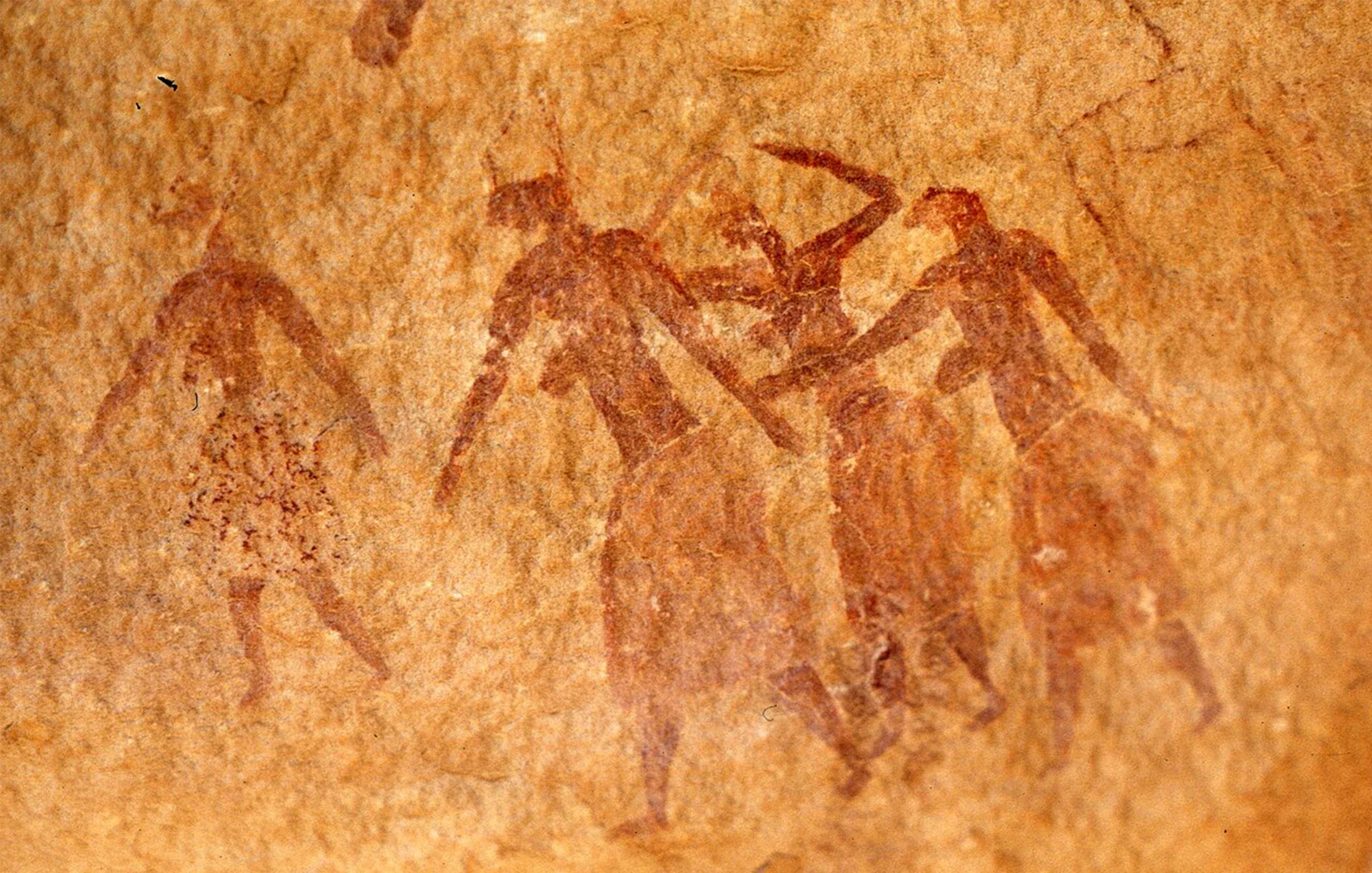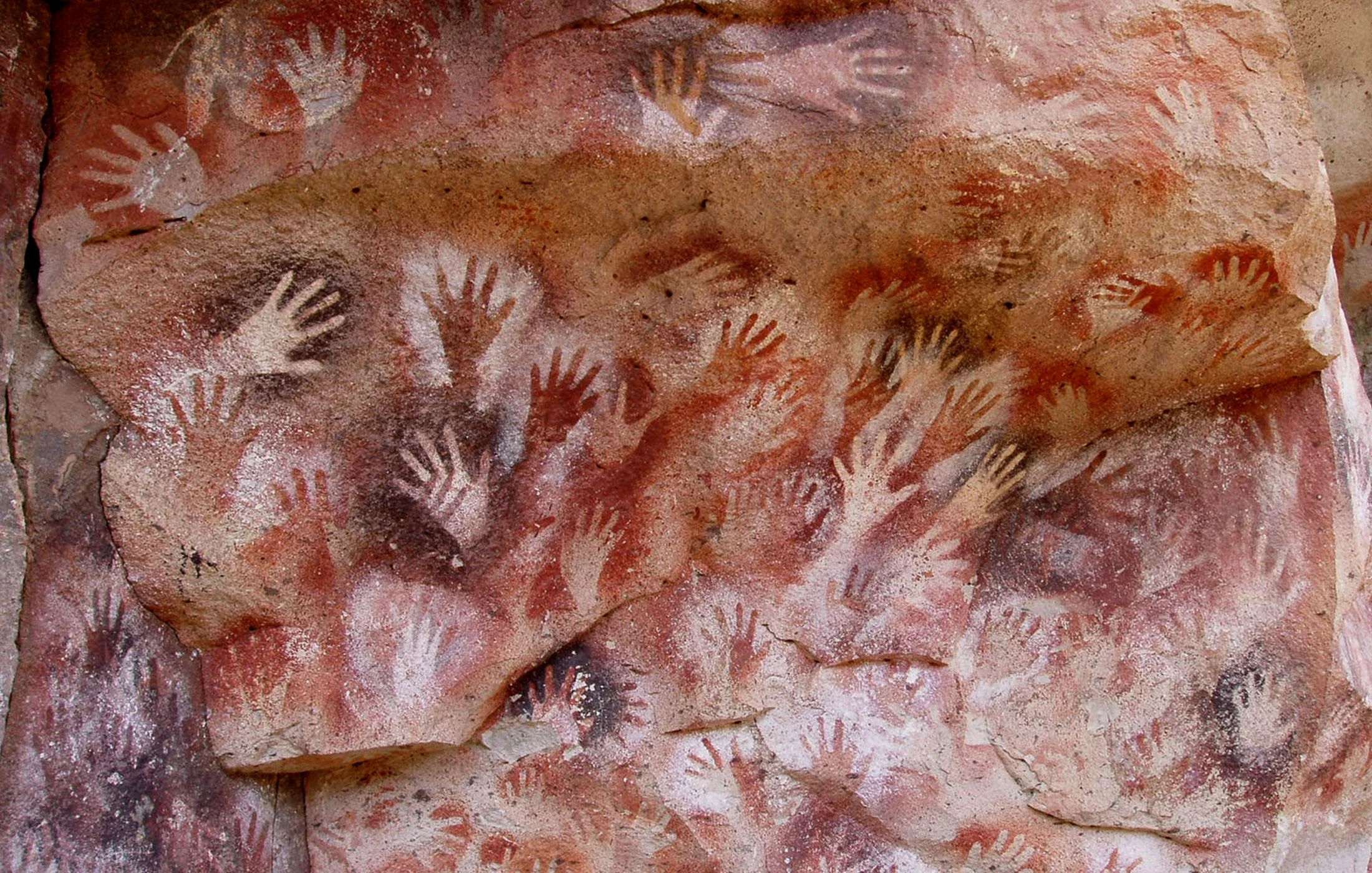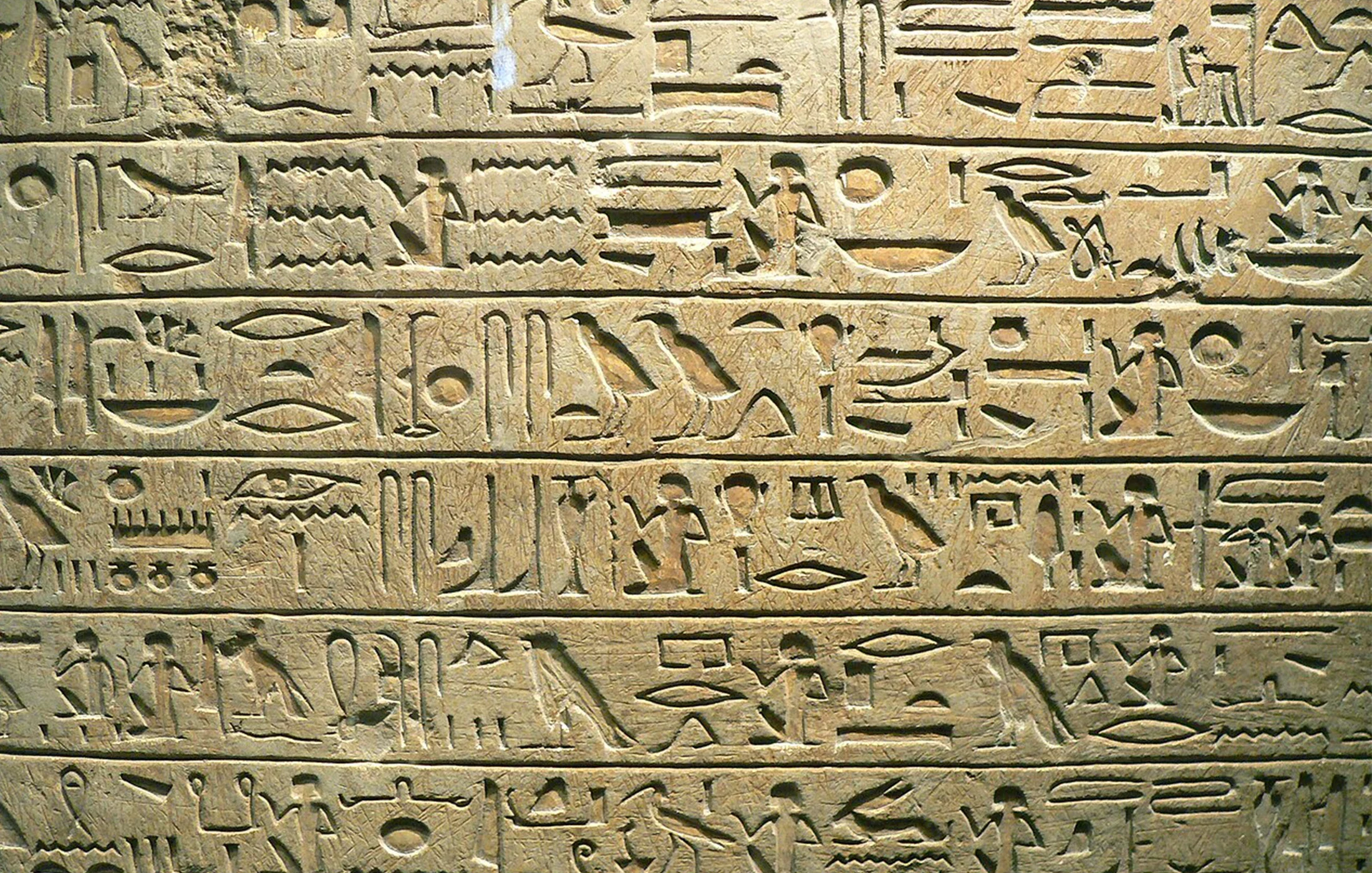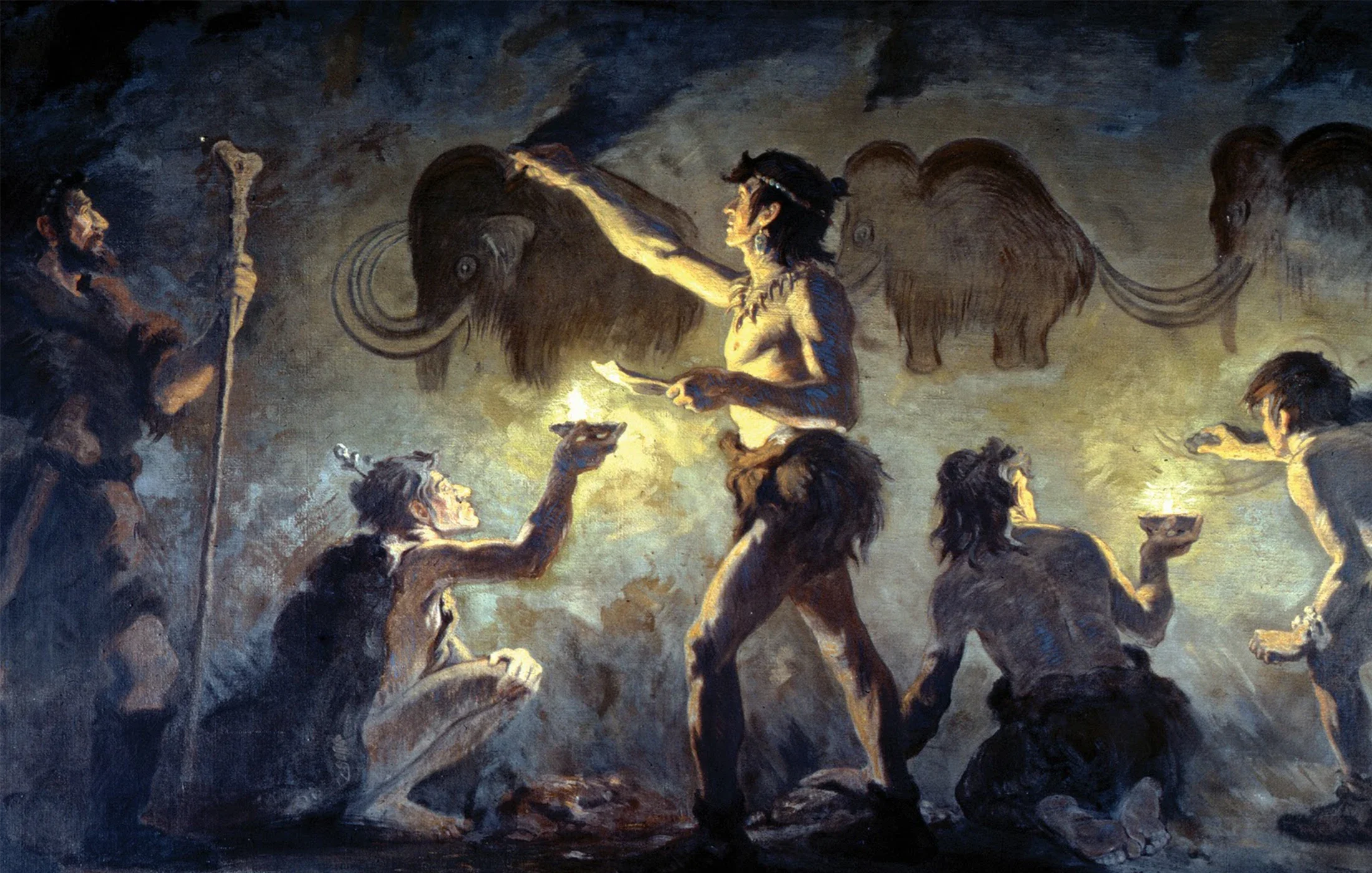Naked in the Boardroom: Rock Cold Play
Cave art from Tassili n’Ajjer, a mountain range in the Sahara Desert that holds one of the most important groupings of prehistoric rock paintings.
When was the last time you attended a board meeting in your birthday suit?
A CEO was caught on camera at a rock concert recently, enthusiastically embracing a female colleague from his company. The irony was the band’s name was Coldplay, though the scene was anything but a cold one. In today’s era, where boardrooms obsess over “appropriate behaviour” while failing to tell authentic stories, the footage spread faster than any brand strategy. It was a reminder that corporate life clings to a performance of restraint; yet scratch the surface, and you’ll find something far more human (and sometimes more headline-grabbing) than a cliched purpose statement.
Hands at the Cuevas de las Manos upon Rio Pinturas, near the town of Perito Moreno in Santa Cruz Province, Argentina (created by several people between 7,300 BC and 700 AD).
Caves full of humans with urges, contradictions, and stories they’d rather not see projected on a stadium screen
The first board meetings weren’t in glass towers; they were in caves. People stripped naked, painted their faces, pressed their hands on stone walls, and told stories that bound tribes together. Egyptians, Aboriginals and many other cultures did it in caves, delivering their annual reports rich with metaphor, memory, and myth. Compare that to a modern board presentation written in endless platitudes today and one fails to understand the soul of the company.
In my thirty years in boardrooms, I’ve been mistaken for the court jester more than once; but I’ve always been after the crown jewels. Too often, I’ve discovered that the only brand strategy in the room is to avoid saying the word brand. My agenda slot was always after lunch before the directors run for the airport: a brief subject item in intellectual no-man’s land discussing strategy, mission, and vision… stepping a board of directors into a mysterious and uncomfortable chasm where brand was supposed to live.
My work isn’t done yet
Over the past 18 months I’ve been researching the quandary boards have about their brands in preparation to write a future book. It’s been like pulling on a thread, only to realise it’s connected to everything. And yet, most companies would rather tidy the ambiguity away with bullet points. Yet we’re not wired for bullet points. We’re wired for stories.
Brand is not the warm-up act for marketing. It’s the main event. It’s the soul of a business trying to speak, and most companies mumble. Brand without purpose is like a lighthouse with no bulb: lovely architecture, no guidance. Most companies have a vision statement; few have actually seen anything, let alone embraced it with a collective passion (and hopefully not at a public concert).
The soul of the business trying to speak
A brand story should undress itself layer by layer, leaving the audience begging for more. Like artful striptease, the best stories linger in the mind long after the last reveal. Strip away the obvious, and let the audience discover the magic themselves.
Hieroglyphs on a stela in the Louvre in Paris, from the late Egyptian period (c. 1321 BC)
A brand story should undress itself layer by layer, leaving the audience begging for more. Like artful striptease, the best stories linger in the mind long after the last reveal. Strip away the obvious, and let the audience discover the magic themselves.
In this public age, it may be impossible to attend board meetings naked, but perhaps it would do some of us good. Naked alignment of the business you're in forces honesty. It strips away wallpaper thinking. It reminds us that story is not a slogan; it’s a survival mechanism. The cave dwellers knew it. The Egyptians knew it and their hieroglyphics 5,000 years on remain stickier than most annual reports.
We talk about alignment in business, but often it’s just everyone vaguely agreeing on what not to do. A story galvanises, makes meaning, creates belonging. Without naked alignment and a passion to deliver a collective story you'll find a rabble trying to understand a cause. In an era of AI beige, true creativity is an act of rebellion. We’ve never had more tech to deliver ideas; or less patience to develop them. Maybe the future belongs to those who can recover the ancient power of storytelling and take us back to daubing the walls.
A depiction of Cro-Magnon artists painting woolly mammoths in Font-de-Gaume by Charles R. Knight (c. 1920).
The curious rituals of the boardroom
Centuries from now, when archaeologists excavate the ruins of our glass towers, they may puzzle over a strange ritual called the “board meeting’’. They will note how the participants gathered around a large rectangular shrine; the table, laden with bottled water, biscuits with gluten, and the projected PowerPoint. Compare this with the earlier civilisations where the tribe sat around a warm fire, telling stories with tension, drama, and meaning. In the boardroom, tension is avoided at all costs. Drama is seen as unhelpful. Resolution is dressed as consent and not dissent, and comes only when the most senior person glances at their watch.
Perhaps, when the future anthropologists are done cataloguing our rituals, they will suggest a radical idea; that board meetings might have been more effective if they had been run like cave meetings; naked, honest, full of firelight and myth. In cave meetings, a single handprint declared: we are here. This is who we are. So let’s light the fire again. Let's paint the walls. Let’s stop mumbling. And if it takes a little metaphorical nakedness to rediscover honesty in the boardroom, away from the “Cold Play”, then perhaps that’s the most decent thing we could do.




